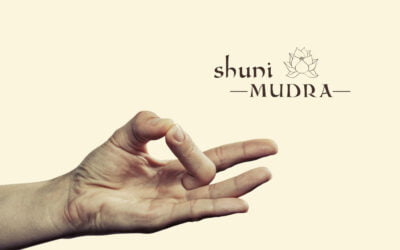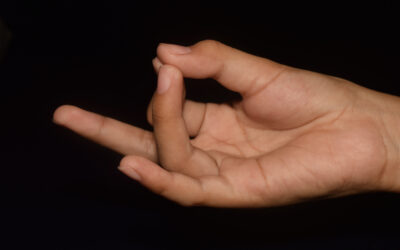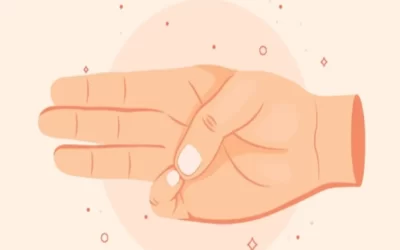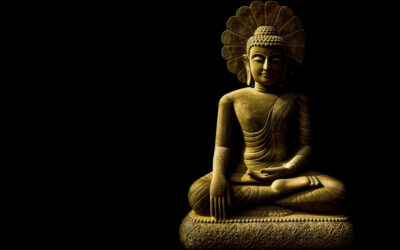Hakini Mudra is a hand gesture commonly used in yoga & meditation practices. It is believed to bring numerous benefits to the mind, body & spirit, while also aiding in stress relief and mental clarity. This mudra, which involves touching the fingertips of both hands together, is said to activate & balance the brain’s hemispheres, promoting improved concentration, memory & cognitive function. In addition to its positive effects on mental wellbeing, Hakini Mudra is also known for its ability to alleviate headaches, calm the nervous system & enhance overall vitality. However, it is important to approach this gesture with caution, as it may not be suitable for everyone. It is advised to learn the correct technique & practice it under the guidance of a qualified instructor to avoid any potential side effects or complications. In this article, we will explore the benefits, side effects, proper method & precautions associated with Hakini Mudra, providing you with a comprehensive understanding of this powerful hand gesture.
Benefits of Hakini Mudra.
While it may seem simple, practicing Hakini Mudra offers following numerous benefits for the mind, body & spirit.
1. Enhanced Cognitive Abilities.
One of the primary benefits of Hakini Mudra is its ability to stimulate & balance the brain’s hemispheres. By uniting the fingertips, this mudra encourages the flow of energy between the left & right brain, promoting improved focus, concentration and memory. It helps in harmonizing the mind, leading to enhanced cognitive abilities & mental clarity.
2. Increased Energy Flow.
Hakini Mudra helps to channel & amplify the flow of prana or life force energy throughout the body. By joining the fingertips, energy is redirected back into the body, preventing its dissipation. This increased energy flow revitalizes the body & mind, boosting vitality and overall wellbeing.
3. Strengthened Nervous System.
Regular practice of Hakini Mudra can have a positive impact on the nervous system. It helps in balancing the sympathetic & parasympathetic nervous systems, promoting a state of equilibrium. This can result in reduced stress, anxiety & nervousness, while enhancing relaxation & calmness.
4. Improved Communication & Expression.
As Hakini Mudra balances the brain hemispheres, it also enhances communication between them. This can lead to improved verbal & nonverbal communication skills. Additionally, this mudra helps to activate the throat chakra, facilitating clear & effective expression of thoughts and emotions.
5. Heightened Intuition & Creativity.
By harmonizing the brain’s hemispheres & promoting energy flow, Hakini Mudra can also awaken & enhance one’s intuitive and creative abilities.
This mudra helps individuals to tap into their inner wisdom & access new perspectives, leading to innovative thinking & problem solving.
6. Emotional Stability & Balance.
Regular practice of Hakini Mudra can assist in achieving emotional stability & balance. It aids in reducing feelings of restlessness, anxiety & emotional turmoil, promoting a sense of inner peace & tranquility. This mudra also helps in alleviating mood swings & fostering emotional wellbeing.
7. Spiritual Growth & Connection.

Hakini Mudra has profound effects on the spiritual aspect of an individual. By harmonizing the brain, energy flow & chakras, it supports spiritual growth and deepens one’s connection to their higher self or spiritual essence. This mudra can facilitate a sense of unity, clarity & spiritual awakening.
| 💡 Tips FreakToFit.com Incorporating Hakini Mudra into your yoga or meditation practice can offer an array of benefits for your overall wellbeing. Whether you seek improved cognitive abilities, emotional stability, enhanced communication or spiritual growth, this powerful hand gesture can assist you on your journey to self discovery & inner transformation. |
Side Effects of Hakini Mudra.
While this mudra offers numerous benefits, it is important to be aware of potential side effects that may arise when practicing Hakini Mudra.
1. Overstimulation.
One possible side effect of Hakini Mudra is overstimulation of the mind. This mudra activates specific energy channels in the brain, which can lead to excessive mental activity. Individuals may experience racing thoughts, restlessness or difficulty in finding a sense of calmness.
2. Increased Sensitivity.
Hakini Mudra can also heighten sensitivity to external stimuli. As the energy flows through the brain, individuals practicing this mudra may become more susceptible to noises, bright lights or any other sensory input. This heightened sensitivity can be overwhelming for some individuals, causing discomfort or even anxiety.
3. Emotional Release.
Another side effect that may occur with Hakini Mudra is the release of suppressed emotions. As this mudra stimulates energy pathways in the brain, it can bring unresolved emotions to the surface. Individuals may unexpectedly experience emotional ups & downs, ranging from sadness to anger or even happiness.
It is important to approach these emotions with compassion & allow them to be processed and released.
4. Headache or Discomfort.
In some cases, individuals may experience mild headaches or discomfort when practicing Hakini Mudra. This can be due to the increased energy flow in the head region. If this occurs, it is advisable to take a break, practice deep breathing, or modify the duration or intensity of the mudra.
5. Fatigue.
Although Hakini Mudra is known for its ability to enhance mental focus, it can also lead to mental exhaustion if practiced excessively or for prolonged periods of time.
The intense concentration required during this mudra can be draining, resulting in mental fatigue. It is essential to listen to the body’s signals & take breaks when needed to prevent exhaustion.
| 💡 Tips FreakToFit.com It is crucial to note that side effects of Hakini Mudra can vary from person to person. Some individuals may not experience any adverse effects, while others may encounter one or more of the mentioned side effects. It is always recommended to practice any yogic technique under the guidance of an experienced teacher & to listen to the body’s response during the practice. |
How To Do Hakini Mudra?
To perform Hakini Mudra, follow these steps:
1. Find a Comfortable Seated Position.
Begin by sitting in a cross legged position on a yoga mat or any comfortable surface. Ensure that your spine is erect, allowing for proper energy flow throughout the body.
2. Relax the Body & Breathe Deeply.
Take a few moments to relax your body & calm your mind. Close your eyes gently and take a few deep breaths, inhaling through your nose & exhaling through your mouth. Allow any tension or stress to melt away with each breath.
3. Bring Your Hands Up to Your Heart Level.
Lift your hands up to the chest level, with your palms facing each other. Allow your fingertips to touch lightly, creating a gentle connection between the two hands.
4. Interlace Your Fingers.
Thereafter, interlace your fingers with your palms still facing each other. Ensure that your thumbs are extended upward, pointing towards the ceiling.
5. Apply Gentle Pressure.
While maintaining the interlaced fingers, gently press your palms together. Apply light pressure to activate the energy flow within the hands & fingers.
6. Focus Your Gaze.
Open your eyes softly & focus your gaze on the space between your eyebrows also known as the third eye. This focal point helps to channelize your concentration & direct it inward, enhancing the effects of the mudra.
7. Stay in the Mudra.
Hold the Hakini Mudra for 5 to 10 minutes or as long as feels comfortable for you. During this time, continue to breathe deeply & stay present with the sensations in your body.
8. Release the Mudra.
To release the mudra, gently unclasp your hands & let them rest in your lap. Take a moment to observe any changes or sensations you may have experienced during the practice.
| 💡 Tips FreakToFit.com Practicing Hakini Mudra regularly can help to improve your ability to focus, boost memory retention & enhance overall mental clarity. It is recommended to incorporate this mudra into your daily meditation or yoga routine for maximum benefits. Remember to listen to your body & practice with patience and consistency as you explore the transformative power of Hakini Mudra. |
Precautions During Hakini Mudra.
However, as with any other yogic technique, it is important to approach Hakini Mudra with certain precautions to ensure a safe & beneficial experience. Here are some essential precautions to keep in mind while practicing Hakini Mudra:
1. Warm up.
Before attempting Hakini Mudra it is advisable to warm up the body & prepare the mind through gentle stretching exercises or a short meditation session. This helps to activate the energy channels & prime the body for the practice.
2. Comfortable Posture.
Sit in a comfortable & stable posture such as Sukhasana (Easy Pose), Padmasana (Lotus Pose) or Vajrasana (Thunderbolt Pose). Ensure that your spine is erect, shoulders relaxed & the body is at ease. Maintaining a proper posture allows the energy to flow smoothly during the practice.
3. Awareness of Limitations.
It is crucial to be aware of any physical or mental limitations you may have. If you have any pre existing medical conditions or injuries, consult with a qualified yoga instructor or healthcare professional before attempting Hakini Mudra. They can provide guidance on how to modify the practice to suit your individual needs.
4. Gradual Progression.
Beginners should start with shorter durations & gradually increase the practice time as they become more comfortable with the technique. Pushing yourself too hard or holding the gesture for an extended period can lead to strain or discomfort. Listen to your body & honor its limits.
5. Gentle Pressure.
When performing Hakini Mudra apply a gentle pressure between the fingertips of each hand. Avoid excessive force or squeezing, as this may cause discomfort or strain in the fingers, hands or wrists. Maintain a balanced & relaxed pressure throughout the practice.
6. Mindful Breathing.
While practicing Hakini Mudra focus on maintaining a steady & relaxed breath. Avoid holding your breath or straining during the practice. Breathing in a smooth & even manner helps to calm the mind & enhance the benefits of the Mudra.
7. Release Tension.
After completing the Hakini Mudra practice, take a moment to release any tension or tightness that may have accumulated in the body. Gently stretch your fingers, rotate your wrists & perform some shoulder rolls to release any discomfort.
| 💡 Tips FreakToFit.com Remember, Hakini Mudra should be practiced with mindfulness, patience & respect for your body’s limitations. If you experience any pain, discomfort or dizziness during the practice, discontinue it immediately & seek guidance from a qualified yoga instructor or healthcare professional. With proper precautions and regular practice, Hakini Mudra can be a transformative tool for enhancing mental focus and clarity in your yoga & meditation journey. |
My Personal Experience on Hakini Mudra.
Hakini Mudra, also known as the Gesture of Power, is a powerful hand gesture in yoga that I have had the privilege of experiencing. During my practice, I adopted this mudra by bringing my hands together and interlocking the fingers while keeping the thumbs extended & pressed against each other.
The effects were truly transformative. As I closed my eyes & focused on my breath, I felt a surge of energy flowing through my body, bringing a sense of calm & centeredness.
It felt as if a connection was established between the left & right hemispheres of my brain, enhancing my mental clarity and intuition.
This mudra helped me feel more balanced and in control, allowing me to approach challenges with a renewed sense of power & confidence. Overall, my personal experience with Hakini Mudra was an enlightening journey of self discovery & empowerment.
Frequently Asked Questions.
Hakini Mudra can be practiced for a few minutes to several minutes, depending on individual preference and comfort. It is beneficial to start with shorter durations and gradually increase the time as one becomes more familiar with the practice.
Yes, Hakini Mudra can be practiced by anyone, regardless of age or fitness level. It is a safe & simple hand gesture that can be easily incorporated into daily yoga or meditation routines.
Hakini Mudra can be practiced at any time of the day, depending on personal preference. However, many people find it beneficial to practice in the morning to set a focused & clear mindset for the day or in the evening to calm the mind & relax before sleep.
Bottom Line.
Hakini Mudra is a powerful hand gesture that can be practiced to enhance cognitive abilities & improve overall mental wellbeing. By bringing the fingertips together & focusing on the breath, this mudra creates a harmonious balance between the left and right hemispheres of the brain, promoting increased concentration, memory & clarity of thought. Regular practice of Hakini Mudra can also help in reducing stress and anxiety, allowing individuals to experience a greater sense of calm & peace. Whether used during meditation or as a quick tool to regain focus throughout the day, Hakini Mudra is a simple yet effective technique that can be incorporated into anyone’s daily routine to unlock their full mental potential.

 Workout
Workout
 Meditation
Meditation


 Stories
Stories


 Podcast
Podcast E-book
E-book











